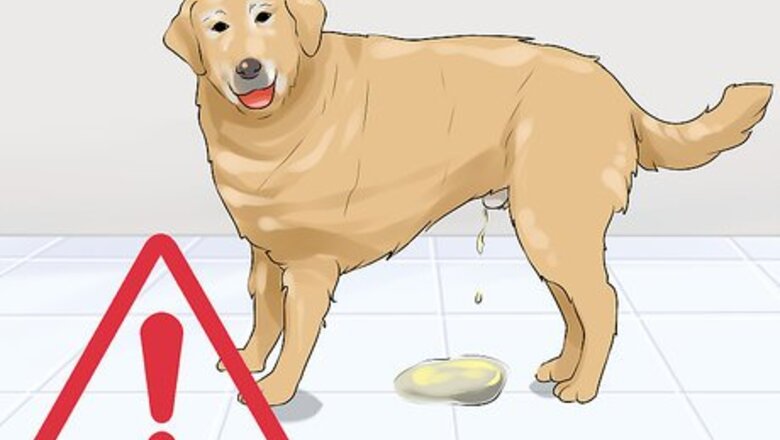
views
Assessing Your Situation

Watch for signs of incontinence. Senior dogs often have issues with controlling their urination and bowels. If they’re having frequent accidents indoors or dribbling urine around the house, it’s a cause for concern that needs to be addressed. Diapers might be part of the solution. Some dogs are only affected during their sleep. Check regularly to see if their bedding has been soiled since this can also be a sign of incontinence.
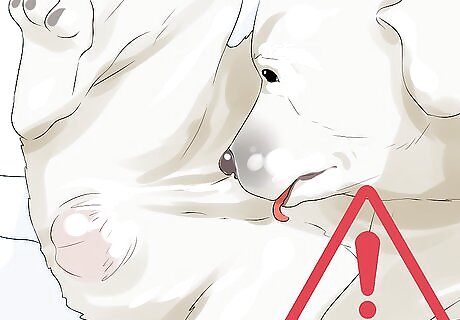
Be on the lookout for licking. Even if your dog is not leaving puddles around the house, they could be dripping urine. Constant licking of their urethra area or skin irritation around it are also signs of incontinence.
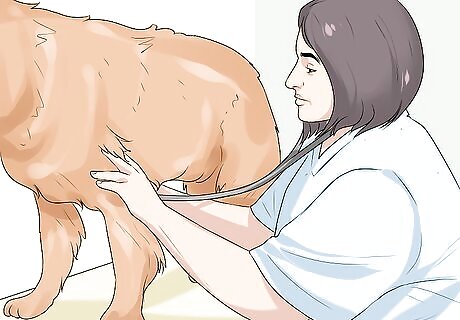
Determine if it’s a chronic condition. Not all incontinence is permanent; it may be a symptom of a temporary or treatable condition, like anxiety or a urinary tract infection. Or, it may be a sign of a more serious illness. Make an appointment with your vet to determine the cause of your dog’s incontinence and see if it’s likely to be a long-term issue. Don't resort to using diapers before checking to see if the underlying condition is treatable or not.

Consider your dog’s hygiene. If your dog’s current incontinence is leaving a mess on their skin, it’s putting your pet at risk of infections and irritations. If that’s the case, using diapers is a good way to mitigate their risk of infection and keep them feeling clean and comfortable. This will also save you time since you won’t have to wash them several times a day.
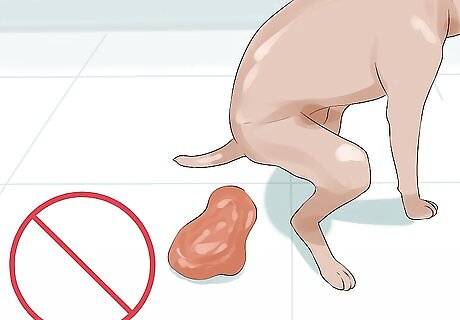
Don’t diaper a dog if the issue is diarrhea. If your pet has diarrhea, diapers are not likely to be a good option for hygiene reasons. Diarrhea is messy and contains a lot of acid, which can burn your dog’s skin if you don’t clean it up immediately.
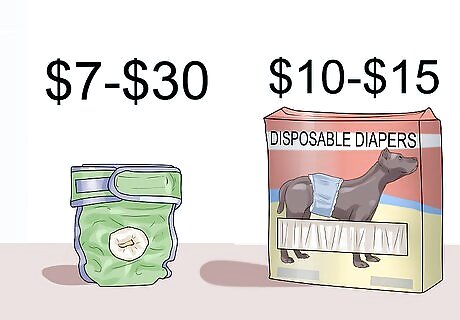
Consider the cost. Disposable diapers range from about $10 - $15 per 12-pack. Washable diapers can range anywhere from $7 - $30 per diaper. You are likely to need 2-5 diapers per day, which can be a considerable expense. If you can’t afford it, you may have to consider alternative options of dealing with your dog’s incontinence. In the long-run, washable diapers are more cost-effective. However, they’re also more labor-intensive since you’ll have to do a lot of laundry. There are also other related accessories, like suspenders to keep diapers in place.
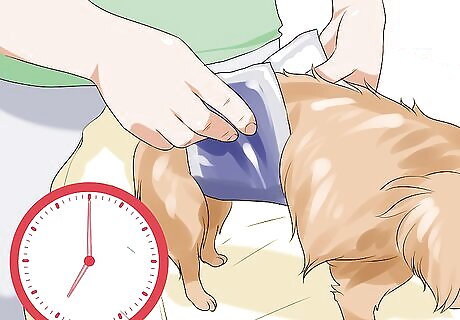
Take account of the time commitment. Wearing a diaper may protect the house and soft furnishings, but it isn't necessarily a no-effort option.If you use diapers on your dog, they will need to be changed often to prevent rashes, infections, and messes. If you or another carer are not going to be around to take care of your dog throughout the day, you may need to consider an alternative to diapers. If your dog defecates, someone should be on hand to change their diaper immediately. If your dog is dealing with mainly urinary issues, you should still change your dog’s diaper a few times a day. Just as a baby’s genitals need to be cleaned each time its diaper is changed, so do your dog’s.
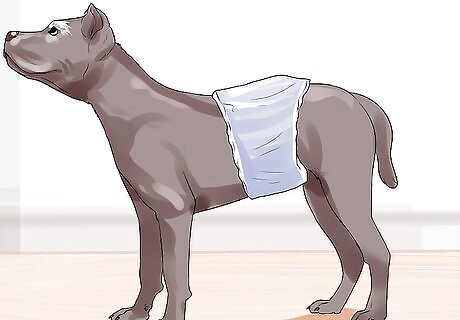
Decide if it will improve the dog’s and your quality of living. If incontinence is your dog’s only significant health issue, using diapers to make their old age more comfortable is probably a good idea. If diapers are the most convenient solution to your pet’s issues, then they’re also probably a good idea for you as a pet owner. On the other hand, if your dog consistently resists wearing diapers or doing so is significantly affecting their comfort and/or mobility, it’s probably not the best option for your pet. EXPERT TIP Colleen Demling-Riley, CPDT-KA, CBCC-KA, CDBC Colleen Demling-Riley, CPDT-KA, CBCC-KA, CDBC Canine Behavior Consultant Colleen Demling-Riley (CPDT-KA, CBCC-KA, CDBC) is a Canine Behavior Consultant and the Founder of Pawtopia Dog Training. With more than 20 years of experience, she specializes in creating and customizing dog management programs for dog owners. She is a Certified Pet Dog Trainer-Knowledge Assessed, Certified Behavior Consultant Canine-Knowledge Assessed, Certified Dog Behavior Consultant, and American Kennel Club Canine Good Citizen Evaluator. Colleen is a member of the International Association of Canine Professionals and has been a featured expert in national media including the New York Times, Woman’s Day, Readers Digest, Cosmopolitan, and Yahoo.com. Colleen Demling-Riley, CPDT-KA, CBCC-KA, CDBC Colleen Demling-Riley, CPDT-KA, CBCC-KA, CDBC Canine Behavior Consultant When using a diaper on your dog, make sure they feel comfortable. Don't punish them if they initially try to remove it. Help them adjust by putting the diaper on for shorter periods at first and giving them lots of rewards and praise. Increase the duration over time, trying different types of diapers to find the best fit. Be patient and positive throughout the process to ensure your dog adjusts to wearing a diaper comfortably.
Considering Alternatives
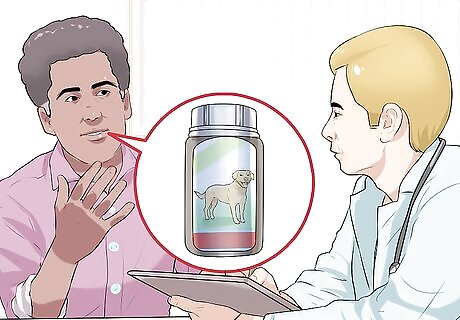
Ask your vet about medical options. Sometimes the conditions that cause incontinence can be treated with hormone supplements, medicine, and/or surgery. Speak with your vet about potential cures or treatments for your dog that would make diapers unnecessary. If your dog is currently taking prescription drugs, inquire if any of their medicines might be causing incontinence as a side-effect. If that’s the case, an adjustment to their dosage might help address the problem. Keep in mind that many of these treatments can be expensive, temporary, and/or have serious side-effects. Be sure to factor these considerations into your decision about whether or not to pursue them versus addressing the symptoms with diapers and other measures.
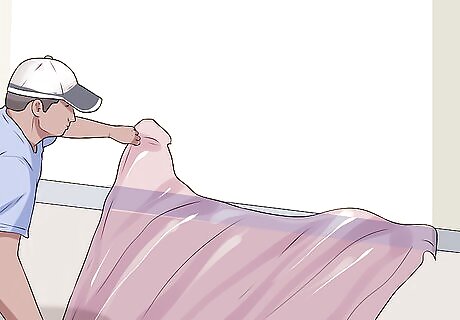
Create a designated space for your dog. Consider confining your dog to an area of your house that’s easy to clean. Alternatively, you can actively protect an area of your house by laying down plastic sheeting covered with easy-to-wash towels or blankets. There is also special bedding available for incontinent dogs to keep your floors clean and your dog from sleeping in a puddle. You can also protect furniture and floors with washable pee pads, which are available from any medical supply business. Keep in mind that this alternative to diapers is also labor-intensive since it involves constant washing and cleaning. It also presents a significant alteration to the aesthetic and cleanliness of your house.
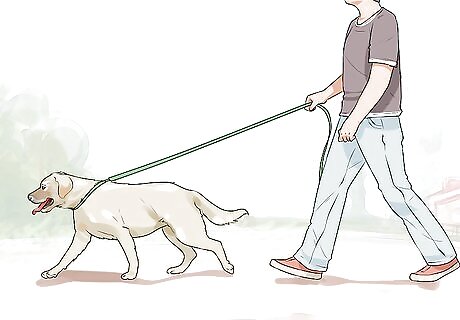
Give your dog more outside time. Letting your dog roam outside will help keep them clean and mitigate their anxieties about having accidents. This is also nice to do for your dog if you do decide to put them in diapers since it gives them a chance to spend part of the day diaper-free. Remember to only do this as the weather allows. Senior dogs are less able to regulate their body temperatures and should not be left out unsupervised in hot or cold weather.
Choosing the Right Diapers
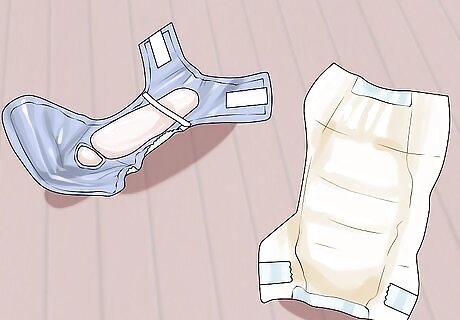
Choose between washable and disposable diapers. If your dog is having short-term incontinence issues, getting a pack of disposable diapers is probably the best solution. If your dog will be dealing with incontinence in the long-term, washable diapers will be the most environmentally friendly and cost-effective solution. In spite of the cost implications, you may want to use disposable diapers because they’re more convenient. Washable diapers, after all, must be washed regularly. The other pros of washable diapers include better fit and less noise from rustling plastic when your dog is moving around.
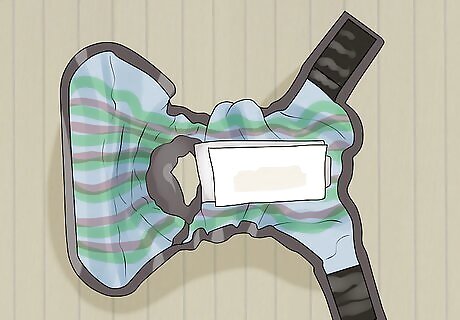
Supplement diapers with incontinence pads for heavy leaks. If your dog leaks a lot, you may have to add disposable or washable incontinence pads to your dog’s washable diaper to absorb the moisture. If your dog is defecating in their diaper, it’s essential to use a disposable liner for the sake of easy and hygienic cleaning.
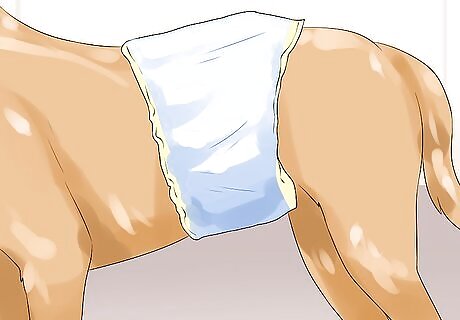
Consider a belly band for male dogs. If you have a male dog that only has difficulty with dribbling urine, you could use a belly-band in lieu of a diaper. Belly bands are machine-washable wraps that provide leak protection while protecting your dog’s skin. Belly bands tend to be less obstructive than diapers for your dog and less hassle for you since they generally velcro on and off.
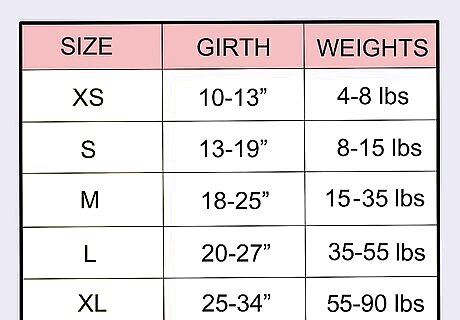
Get the sizing right. Diapers generally come in five sizes, from extra-small to extra-large, that have different associated weights and waist sizes. Check the sizing chart for each brand to ensure you get the right size. In general, the breakdowns for weights and waist sizes are as follows: extra-small - 4-8 lbs / 10-13”, small - 8-15 lbs / 13-19”, medium - 15-35 lbs / 18-25”, large - 35-55 lbs / 20-27”, extra-large - 55-90 lbs / 25-34”. Male dogs sometimes need a size up to accommodate their genitalia. To ensure the sizing is right, you’ll have to test the diapers on your dog. It should be snug enough to prevent leakage but comfortable enough that it does not cause chaffing, especially around the elastic openings.













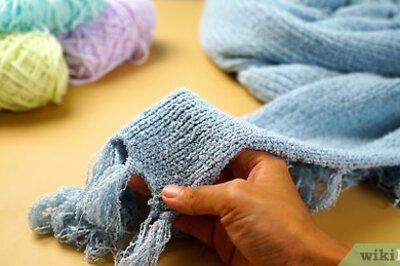






Comments
0 comment